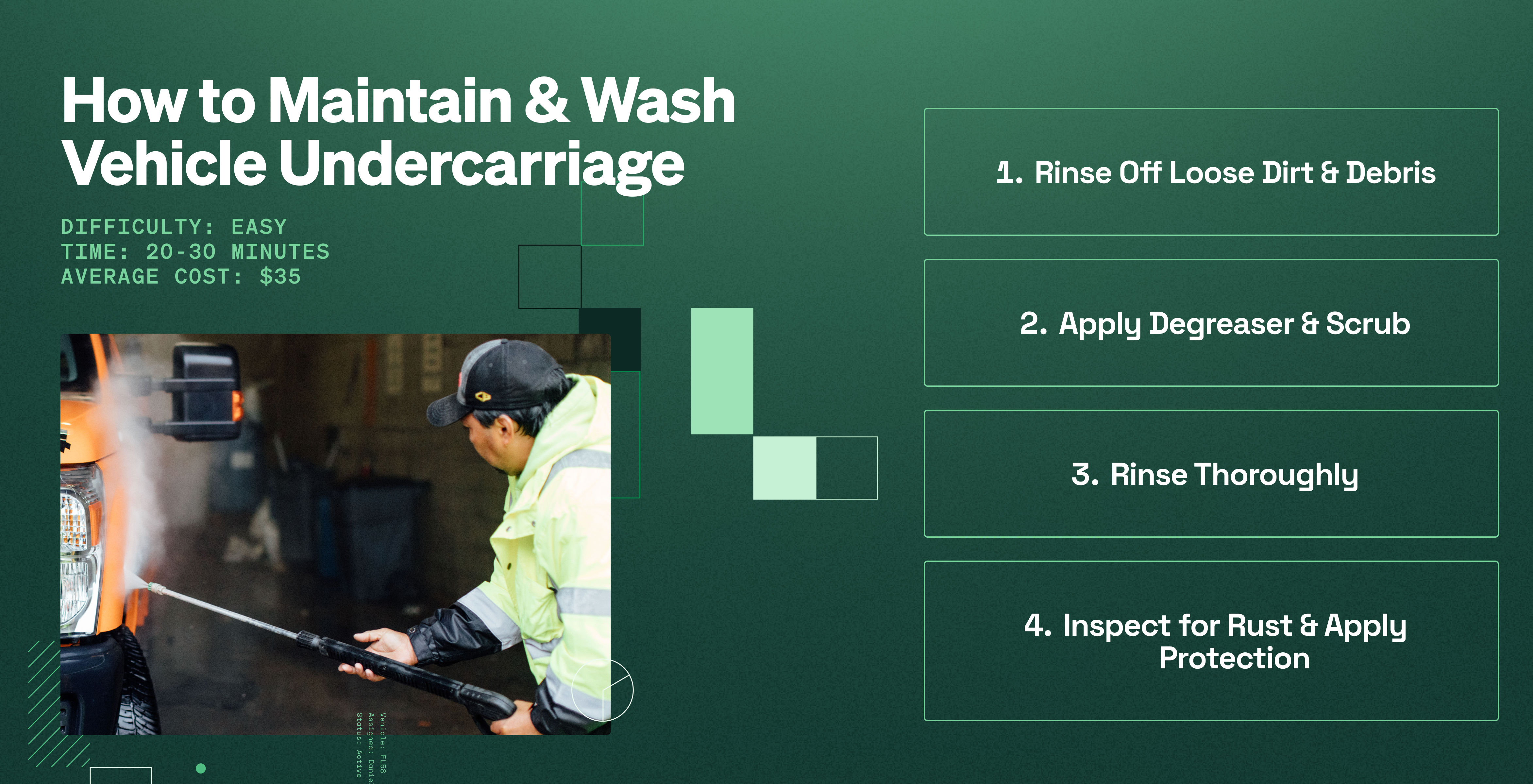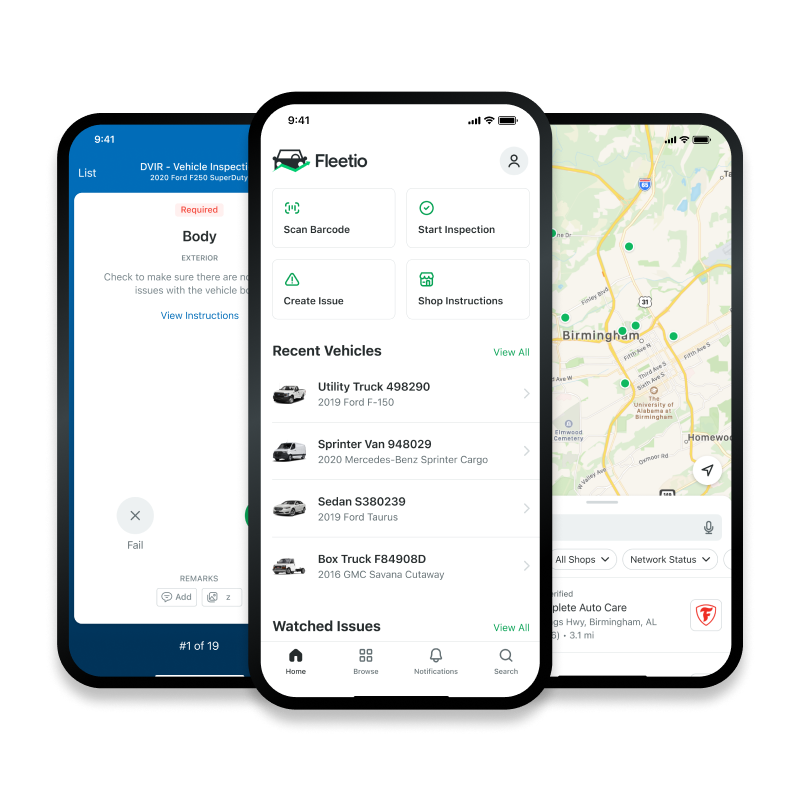How To
How to Clean and Maintain Vehicle Undercarriages: A Step-by-Step Guide
Your vehicle’s undercarriage takes a beating from road salt, dirt, and debris. Over time, buildup can cause rust, corrosion, and mechanical issues if left unchecked.

Regular cleaning and maintenance help extend your vehicle’s lifespan and prevent costly repairs, especially for fleet vehicles that rack up miles in harsh conditions.
Note
Vehicles in snowy or coastal areas are more prone to undercarriage rust. Washing at least once a month can help prevent long-term damage.
In this guide
What to Expect
- Time Needed: 20-30 minutes
- Difficulty: Easy
- Average Cost: $35
Source: 2025 Fleet Benchmark Report
What You’ll Need
Pressure washer or garden hose with high-pressure nozzle
Undercarriage cleaning attachment (optional but helpful)
Degreaser or undercarriage-safe cleaner
Stiff-bristle brush
Rust inhibitor or protective coating (optional)
Jack & jack stands (if more thorough access is needed)

How to Clean and Maintain a Vehicle Undercarriage
Step 1: Rinse Off Loose Dirt and Debris
- Park on a flat surface and ensure the vehicle is off and cool.
- Use a pressure washer or garden hose to spray the undercarriage, focusing on wheel wells, frame rails, and suspension components.
Pro-tip
If using a pressure washer, maintain a safe distance to avoid damaging sensors or wiring.
Step 2: Apply Degreaser & Scrub
- Spray undercarriage cleaner or degreaser on areas with oil buildup or road grime.
- Let the cleaner sit for 5 to 10 minutes to break down dirt.
- Use a stiff-bristle brush to scrub problem areas if buildup is heavy.
Step 3: Rinse Thoroughly
- Spray down the undercarriage again, making sure to remove all cleaning residue.
- Pay close attention to tight spaces like suspension joints and skid plates where debris collects.
Step 4: Inspect for Rust & Apply Protection (If Needed)
- Look for rust spots or chipped paint that could lead to corrosion.
- If rust is present, treat it with a rust converter before applying a protective coating.
- Apply an undercarriage protectant or rust-inhibiting spray to help prevent future damage.
Avoid These Common Mistakes
- Skipping regular undercarriage cleaning. Dirt, salt, and moisture can cause rust over time. Vehicles in winter climates or off-road conditions should have their undercarriages cleaned at least once a month.
- Using the wrong cleaning products. Harsh chemicals can damage rubber seals, coatings, or electrical components. Always use undercarriage-safe cleaners and avoid high-acid degreasers.
- Ignoring rust spots. Small rust patches spread quickly if not treated. If you spot early signs of rust, use a rust converter and protective coating to prevent further corrosion.
Track service histories across all fleet assets
Fleetio makes it easy to schedule regular cleanings, track service history, and set automated maintenance reminders, so every vehicle stays road-ready.
Try Fleetio for FreeFAQs
How often should I clean my vehicle’s undercarriage?
At least once a month, especially if driving in snowy, muddy, or coastal areas. Fleet vehicles exposed to heavy road debris may need more frequent cleaning.
Can I wash my undercarriage at a regular car wash?
Many automatic car washes have undercarriage spray features, but they may not remove heavy buildup. A pressure washer or manual wash is more effective.
What’s the best way to prevent undercarriage rust?
Regular cleaning, applying rust inhibitors or undercoating, and inspecting for chipped paint or exposed metal help prevent rust from spreading.
Does undercarriage cleaning help fuel efficiency?
Yes! Built-up debris adds weight and drag, which can reduce fuel efficiency over time. Keeping the undercarriage clean helps maintain optimal performance.
How much does professional undercarriage cleaning cost?
A basic undercarriage wash at a car wash costs $10 to $20, while detailed rust prevention services range from $100 to $500.



